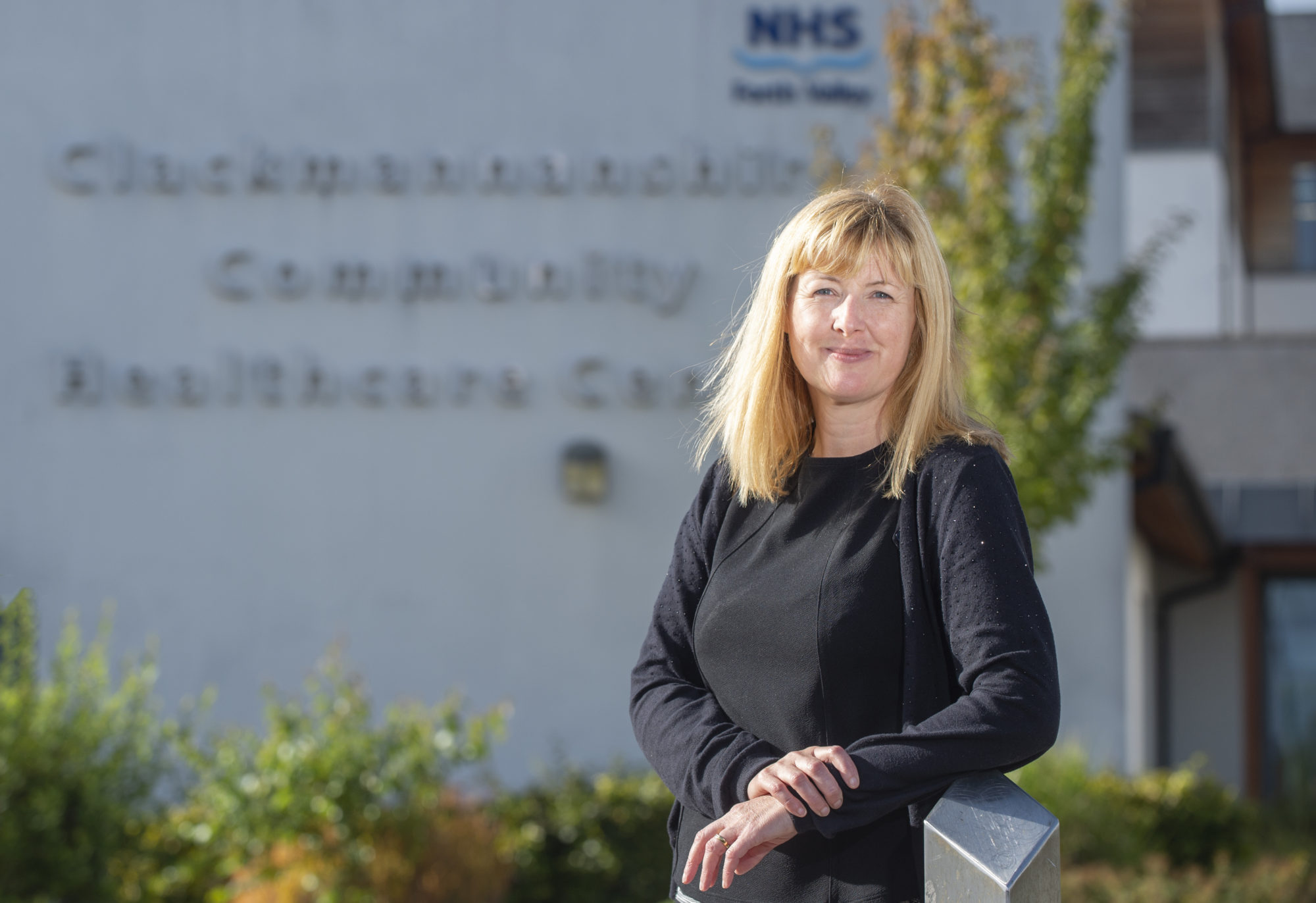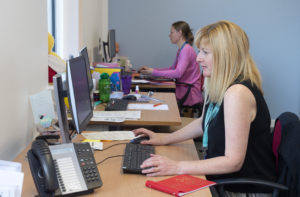Margaret-Ann Williamson

In her role as Health Visitor Team Lead for NHS Forth Valley covering Clackmannanshire, Margaret-Ann Williamson has been responsible for supporting staff through a period of change with the introduction of the Universal Health Visiting Pathway over the last few years.
When I was in sixth year at school, deciding the direction I was going to go in, it was probably my mum’s influence in reminding me that I used to quite like playing nurses with my dolls when I was a little girl that made me first consider nursing. After some thought, I realised I would be most suited to a caring role and it seemed a good move for me. I went into nurse training at Glasgow’s Southern General Hospital aged 18 and after qualifying I went into a community care of the elderly ward and I really enjoyed that, as so much of that role was about supporting families. Two years later I got a job as a staff nurse working with the health visiting team before qualifying as a health visitor in 1999.
 I then spent 17 years as a health visitor in the same practice, which also included a two-year secondment as a community infant feeding coordinator. Two years ago, I was appointed as health visiting team lead at a time of significant practice change within health visiting, with the introduction of the Universal Health Visiting Pathway and the embedding of Getting it Right for Every Child (GIRFEC) practice framework across NHS Forth Valley.
I then spent 17 years as a health visitor in the same practice, which also included a two-year secondment as a community infant feeding coordinator. Two years ago, I was appointed as health visiting team lead at a time of significant practice change within health visiting, with the introduction of the Universal Health Visiting Pathway and the embedding of Getting it Right for Every Child (GIRFEC) practice framework across NHS Forth Valley.
 The team consists of myself, 16 other health visitors, two nursery nurses, a staff nurse and an administrator. My main role is supporting the staff and building resilience. Some of our work can be quite difficult, working with families facing many challenges. I am committed to giving each team member the time out to look at their plan, look at what interventions they’re offering and ensuring they have the support they need. It’s about giving them space to reflect.
The team consists of myself, 16 other health visitors, two nursery nurses, a staff nurse and an administrator. My main role is supporting the staff and building resilience. Some of our work can be quite difficult, working with families facing many challenges. I am committed to giving each team member the time out to look at their plan, look at what interventions they’re offering and ensuring they have the support they need. It’s about giving them space to reflect.
As team lead I have a responsibility for HR, reporting and strategic planning while also maintaining a small caseload of families.
My day will involve looking at the type of referrals we’ve had and ensuring each family receives the support they require from the right member of the team. The health visitors do the visits, identify the issues and refer into the wider team. We look at issues as a team and see if there are any recurring themes. A recent example would be we kept getting referrals about difficulties when babies where starting weaning, so the nursery nurses organised a series of successful weaning groups.
According to the Scottish Index of Multiple Deprivation (August 2016), parts of Clackmannanshire are amongst the highest areas of deprivation in Scotland with high unemployment, drug and alcohol use all playing their parts. This is impacting on children’s outcomes.
 I was motivated to take the role of team lead because I truly believe the Scottish Government’s new Universal Health Visiting Pathway, represents an exciting time full of opportunities to make a real difference to all our families. The pathway offers families 11 home visits undertaken by a health visitor before the child turns five – the initial eight occurring in the first year of life.Having worked in early intervention for 17 years, I saw the role as a perfect fit for me to influence the work I felt so passionate about.
I was motivated to take the role of team lead because I truly believe the Scottish Government’s new Universal Health Visiting Pathway, represents an exciting time full of opportunities to make a real difference to all our families. The pathway offers families 11 home visits undertaken by a health visitor before the child turns five – the initial eight occurring in the first year of life.Having worked in early intervention for 17 years, I saw the role as a perfect fit for me to influence the work I felt so passionate about.
As well as the community of children and families in Clackmannanshire, I see my team as my community. The changes, which call for all visits to be carried out by Health Visitors, had an impact on the roles of our support team of nursery nurses and staff nurses. My task was to support all staff to implement the pathway and navigate the changes.
 What we found was that the support staff were highly skilled and had a wealth of knowledge in early intervention and child health and wellbeing. Together we carried out an analysis of their skills while I also met with the health visitors to look at what support they felt they required for their families – for example, breastfeeding support for mothers, under-1s groups for families or baby massage.
What we found was that the support staff were highly skilled and had a wealth of knowledge in early intervention and child health and wellbeing. Together we carried out an analysis of their skills while I also met with the health visitors to look at what support they felt they required for their families – for example, breastfeeding support for mothers, under-1s groups for families or baby massage.
The team created a referral sheet and devised systems to monitor the referrals and capture outcomes. I oversaw this work and supported the team in this needs-led project to ensure the shared goal of early intervention to achieve better health and wellbeing for families.
I hope the increased visiting pattern brought in by the universal pathway will helps us identify unmet health needs and developmental delays earlier, leading to earlier interventions.
The team of staff nurses and nursery nurses have all been trying a variety of ways to support health visitors with this work. My developmental project is to look at how we can target their skills more effectively to improve health outcomes for our local children.
 From our data, we were aware that the largest referral to our service was after the 15-month assessment. Often the referrals were as a result of a concern over development or behaviour issues. My Queen’s Nurse issue is to see these children earlier. I believe the earlier we can introduce our parents to our nurturing caring interventions the less likely the children are to have difficulties or to need onward referral to specialist services.
From our data, we were aware that the largest referral to our service was after the 15-month assessment. Often the referrals were as a result of a concern over development or behaviour issues. My Queen’s Nurse issue is to see these children earlier. I believe the earlier we can introduce our parents to our nurturing caring interventions the less likely the children are to have difficulties or to need onward referral to specialist services.
As part of this, we decided to look at the contact visit carried out at eight months by health visitors across NHS Forth Valley. If there was a mild concern or an unmet health need, we would look at offering additional care – that might be a phone call or inviting families to a baby group. We are hoping that this targeted early intervention may also result in a reduction in speech and language or developmental concerns at the 13- and 27-month stage.
I was told when I started in health visiting that you are part of the most important journey of most people’s lives – and I still believe that. Playing a role in the community where you help parents at the very beginning of their journey as a family is something I have always got great fulfillment from.